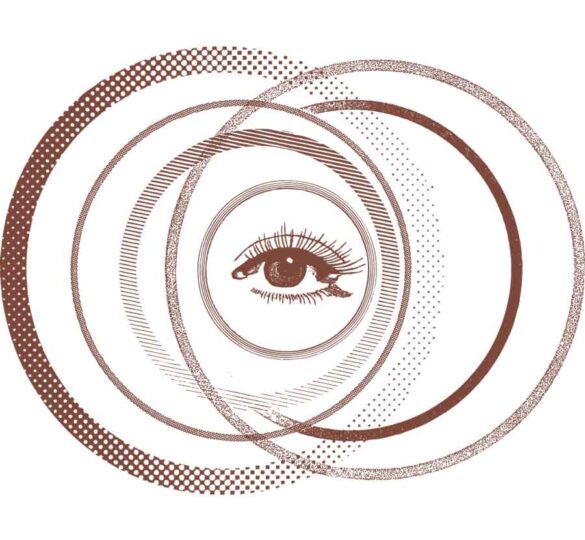Restoring Peripheral Vision to Glaucoma Patients with Prism Glasses
Prism glasses are part of a growing field of vision rehabilitation that focuses on living better with the vision you have.

Glaucoma is often referred to as the “silent thief of sight” for a good reason — it can slowly steal your vision without noticeable symptoms until significant damage has occurred. While treatments like eye drops and surgery help control intraocular pressure (IOP), vision loss caused by glaucoma is usually considered permanent.
Researchers working to prevent pedestrian accidents involving people with partial blindness have made an important discovery: they’ve identified the direction from which collisions are most likely to occur. That research led to an innovation — a new application for prism glasses, a technology well studied and used in other ways for sight restoration.
What Is Glaucoma?
Glaucoma is a group of eye diseases that damage the optic nerve — the part of the eye that sends visual information to the brain. In most cases, a buildup of pressure inside the eye (intraocular pressure, or IOP) causes this damage. There are different types of glaucoma, but the two most common are:
-
Open-angle glaucoma – This is the most common form and is characterized by the angle or drainage channel of the eye appearing open. It develops slowly over time and often has no early symptoms.
- Angle-closure glaucoma – This type is less common but more serious because the drainage channel of the eye is closed. It can come on suddenly and lead to rapid vision loss if not treated right away.
What Is Peripheral Vision and Why Does It Matter?
Peripheral vision or peripheral field loss (PFL) creates problems with orientation and mobility. According to the National Eye Institute, Glaucoma commonly causes peripheral vision loss, which often begins early in the disease, before it affects central vision. That can cause issues for:
- Navigating safely
- Detecting motion
- Driving
- Avoiding falls
What Are Prism Glasses and How Do They Work?
These new glasses have built-in prisms that can shift images from the side into the person’s remaining field of vision, helping them detect things they might not otherwise see. Researchers discovered that these high-power prism glasses expanded the wearer’s side vision by over 15 degrees, allowing them to see images in areas they had previously been unable to see.
It’s a breakthrough that could be a game-changer for people with glaucoma who have lost much of their peripheral (side) vision.
These glasses don’t cure glaucoma or blindness, but they may help restore functional peripheral vision, improving quality of life for many patients.
Prism lenses bend light before it enters your eye, shifting the location of images in your visual field. For glaucoma patients, they can relocate images from blind spots to areas with remaining vision, effectively increasing awareness of the surroundings.
Think of them as a way to “re-map” your field of view.
Researchers used Fresnel segments to build the glasses. These thin, lightweight optical elements are composed of a series of small, flat, angled sections that bend light like a traditional prism, but with much less bulk. Instead of using a smooth, curved surface like regular lenses, these lenses utilize sections angled slightly differently to bend light in specific ways, much like a ring of tiny prisms.
They combined the segments with a unique setup called bi-part prisms, where two prism pieces are joined at the base and tilted toward each other. They also used reflective prisms that weren’t lined up in a straight line, creating additional prism-like effects. They help expand the range of vision that the eyes can scan.
Benefits of Prism Glasses for Glaucoma Patients
- Improved mobility and navigation
- Reduced risk of falls or collisions
- Better awareness of surroundings
- Increased confidence in public spaces
Limitations and Considerations
- Prism glasses do not cure glaucoma or stop vision loss.
- They require training and adaptation, as the shifted image can be disorienting at first.
- Not all glaucoma patients are candidates — it depends on the pattern of vision loss. Low vision specialists and occupational therapists play a key role in determining if prism glasses are suitable.
Help Us Find a Cure
Although glaucoma-related vision loss cannot be reversed, prism glasses provide a powerful tool to improve function and enhance safety. They’re part of a growing field of vision rehabilitation that focuses on living better with the vision you have.
If you’re struggling with peripheral vision, don’t wait. Prism glasses may not yet be widely commercially available, especially those that incorporate high-power Fresnel or reflective prisms to expand peripheral vision in glaucoma. You should talk with your healthcare provider about options.
While there is no cure for glaucoma, advancements in research continue to bring us closer to finding one and restoring vision loss. You can help find a cure by donating cash, stock, or a vehicle. Your support will give hope to those living with glaucoma and accelerate our search for a cure and vision restoration.
The tireless work of researchers continues to improve our understanding of glaucoma daily. As a result, there’s great hope for new and improved treatments, including innovative drug delivery methods, laser treatments, and less invasive surgical techniques. You can help make that happen!
First posted February 24, 2017. Revised and updated July 23, 2025. This article was reviewed for medical accuracy in July 2025 by Reena Garg, MD.

Reena A. Garg, MD
Reena A. Garg, MD specializes in the medical, laser, and surgical treatment of glaucoma and cataract at Visionary Eye Doctors in Rockville, MD. She also serves as the Ophthalmology Residency Program Director at Georgetown University.